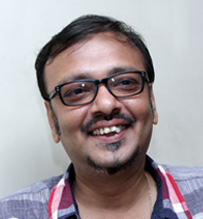 Statistics tell us that “reported age-adjusted incidence rates for cancer are still quite low in the demographically young country”, India that is. “Slightly more than 1 million new cases of cancer are diagnosed every year in a population of 1·2 billion”. In age-adjusted terms that represents a combined male and female incidence of about a quarter of that recorded in Western Europe. As a people, before we pat ourselves in the back also consider the following:
Statistics tell us that “reported age-adjusted incidence rates for cancer are still quite low in the demographically young country”, India that is. “Slightly more than 1 million new cases of cancer are diagnosed every year in a population of 1·2 billion”. In age-adjusted terms that represents a combined male and female incidence of about a quarter of that recorded in Western Europe. As a people, before we pat ourselves in the back also consider the following:
- In age-standardised terms the mortality burden is almost as high as in the same so-called high income countries. Also consider that in a country like India, cancer is not only life threatening for the patient, but its cost of treatment is often economically devastating for the family as well.
- Such figures are partly indicative of low rates of early-stage detection and poor treatment outcomes. In plain speak, it means that the sea of humanity that do not have access to proper medical care comprise of an inordinately high number of patients who are either not diagnosed, or not treated and when they do die, are not reported as cancer patients. So much for lies, damn lies and statistics.
- Many cancer cases in India are associated with tobacco use, infections, and other avoidable causes. Causes that, with increased levels of awareness could have been taken head on, ultimately reducing both the ferocity with which the malady is raising its hydra head and in putting a cap on the burden of our health spend, meager and insufficient, as it is.
- Social inequalities are major determinants of India’s cancer burden, with poorer people more likely to die from cancer before the age of 70 years than those who are more affluent. Cancer treatment is expensive and the Emperor of Maladies insists, without exception, that his pound of flesh is paid. Naturally, the poor are at a huge disadvantage, more so, if one were to consider the fact that the best treatments and the most advanced support systems are generally available outside the purview of the Government run hospitals which are supposed to provide solace to the financially disadvantaged.
If that is grim, then consider the fact that the ratio of registered patients to oncologists is abysmally low in India – and that is putting things mildly. Here too, those in the know, point at the concentration of expert oncologists is in the metro cities with even the Tier II and Tier III cities being virtually starved of them. The level and quality of cancer care in the villages and mofussil areas that is the Real India? The lesser said the better. And no, increased economic prosperity in the hinterlands is not really helping as even while private hospital chains are keen to spread their branch networks away from the mainline cities, they just can’t find, leave alone entice the oncologists to relocate to nowhere land.
And that is only a part of the story – while most oncology centers are located in the Southern and Western parts of the country, the North Eastern States, Bihar, Chhattisgarh, Jharkhand, Uttar Pradesh, West Bengal belt is actually the region that suffers its worst incidence.
Cancer is already an epidemic of sickening proportions in India. And the shortage of trained oncologists (radiologists and nephrologists included) is going to blow on our faces – not because of anything else, but simply because detection will increase as we edge forward in terms of basic medical care.
Cancer calls for dedicated centers with multiple specialties – for lungs, liver, prostrate, breast, kidney, bladder, brain etc – something that cannot be done in the short run given our woeful state of healthcare infrastructure and the callous apathy with which our policymakers approach it. Not convinced, consider the fact that though doctors have traditionally been trained in sub-specialties of oncology, Indian medical institutes and the Medical Council of India started recognising these courses only recently.
(The piece was originally written for the Express Health Guide)
